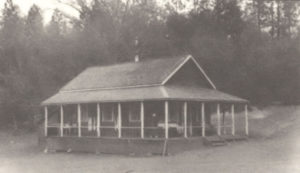 Since the setting of my soon-to-be-released novel, Surrendered, takes place in a small town, I thought I’d continue where I left off last week. I asked a friend of mine, Scott Crawford, to share what Jackson, California was like when he was growing up. Until last summer, I lived just outside of Jackson for many years, and although it’s still small-town living, I experienced nothing like he described.
Since the setting of my soon-to-be-released novel, Surrendered, takes place in a small town, I thought I’d continue where I left off last week. I asked a friend of mine, Scott Crawford, to share what Jackson, California was like when he was growing up. Until last summer, I lived just outside of Jackson for many years, and although it’s still small-town living, I experienced nothing like he described.
His family moved from the Los Angeles area in 1973 when he was sixteen at the urging of his aunt and uncle, who owned Mel & Faye’s Restaurant. At the time, it was a very small order-to-go hamburger stand—and is now a full-service restaurant. Although he and his dad thrived with the move, both his mom and sister suffered from culture shock. The nearest shopping, other than a grocery store, was 45 miles away to Citrus Heights—a subdivision of Sacramento. This was also the nearest movie house, which limited options for dating.
His dad’s gas station was a hub for the community (think Gomer Pyle’s place of business in Andy Griffith) where everybody knew everybody. Scott worked there after school and on weekends. He and his friends would cruise Main Street on the weekends and hang out at Sammy’s (Chinese food), the only 24/7 restaurant around—also the local hot spot after football games. If they wanted fast food, A & W’s was the only choice. Now, there’s a fast food place on almost every corner and A & W has long since closed down.
A somewhat disturbing past-time was swimming in the cooling ponds at the Ranch Seco Nuclear Power Plant. Although Scott doesn’t believe it was a dangerous choice, I’d have preferred the picnics they took to the River on Electra Road. Or, maybe dances at Milligan School, which was another option for dating back in the day. For more on this historic one-room school, click here.
D’Agostini’s Winery was a solo act in 1973, but now, the area around Jackson (the Shenandoah Valley) has a vastly growing reputation as wine country. What was once thriving cattle ranching (in Scott’s day) has been overtaken by vineyards. He remembers the cattle being driven down Highway 88 and the traffic stopped until the cattle could be moved off the road. Today, that wouldn’t even be a possibility.
Another major job industry of his time was the lumber mill. Although the mill closed down in 1994, the scent of freshly cut lumber still lingers in the air. Tourism also brought money into the county—Main Street Jackson had unique shopping and the historic National Hotel. The hotel fell into disrepair over the years and was recently renovated to its former beauty. Surprisingly, a Honda motorcycle shop in business at the time (which is no longer in operation) sold the highest volume of Honda motorcycles in the Western United States.
It’s hard to believe that so much has changed in the last 45 years, but then again, maybe not. Small towns often expand into small cities and continue to grow until you can’t tell where one stops and the other begins, and it’s no different in Jackson, California.
If I had the time and inclination, I could write an entire book on the changes that have taken place over the years in Amador County. The history alone is worthy of a book or two. Historic Highway 49—which runs from Madera County and into Nevada—is named for the year 1849 when gold was discovered in the area. But to be honest, I don’t care much for change. What some people view as progress, I see as sad.
Although I’ve enjoyed visiting big cities, (and I’ve visited my share—San Francisco, New York City, Boston, Tokyo, Madrid, etc.) I always feel I can breathe easier in my small town. Maybe it’s because I’m an introvert and too much stimulation is exhausting. Or, maybe there’s something in my genetic makeup that draws me to small-town life. Either way, I doubt I’d be able to thrive with big city living.
What about you? I’d love it if you’d share your views on the pros and cons of where you live, whether it’s a dinky little town or a bustling metropolis.






Comments 2
Ha! A walk down memory lane. I came to Amador County in 1980 and I remember a lot of this as well. I especially remember the cattle drive and how it tied up traffic. I loved it. Thanks for the post. Linda
Author
That must have been something to see. Sadly, things change!